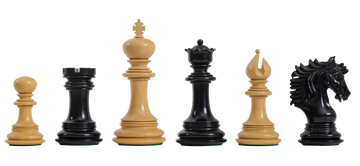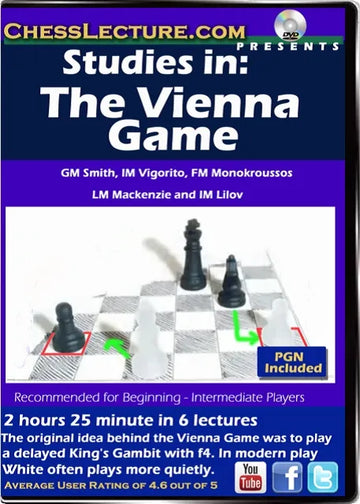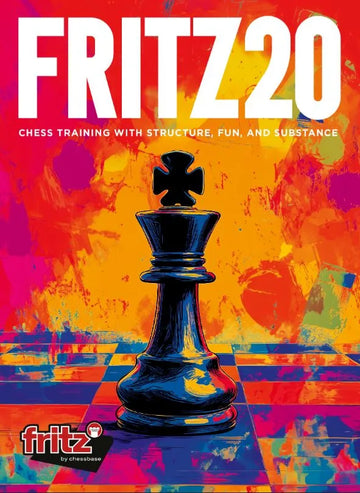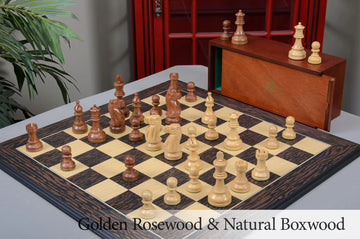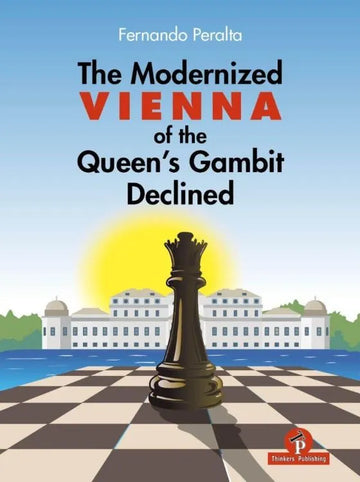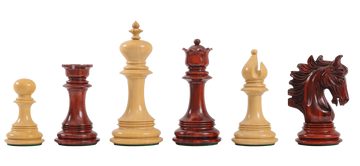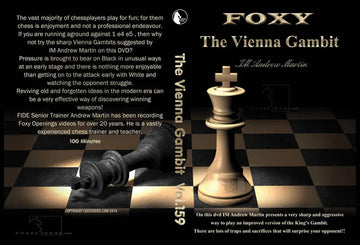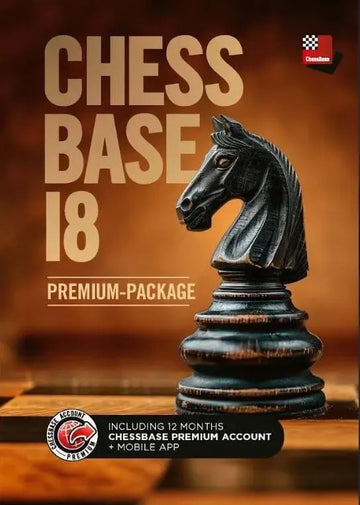Surprise Black With The Vienna Game
If you regularly fantasize about winning chess games within the first 15 moves, the Vienna Game could be your dream come true. While this romantic-era chess opening is rarely played any longer, many lines score White some of the highest win rates of any opening at club level!
Frequently giving rise to the infamous Vienna Gambit, White can often win a decisive advantage, a major piece, or even a checkmate if Black doesn’t know the right moves! If you’re looking for an explosive opening to bamboozle unwitting opponents, you’ve come to the right place.

Introducing the Vienna Game: 2.Nc3
The Vienna Game is defined by the opening moves 1.e4 e5 2.Nc3. It’s a rare second move in the King's Pawn Opening compared to 2.Nf3, and, at first glance, looks relatively passive. For most players who open with the Vienna, however, nothing could be further from the truth!

The beauty of the Vienna Game is that it keeps the f-file open for an intrepid pawn advance. In this way, White can play an attacking opening, similar to the King’s Gambit (1.e4 e5 2.f4), but bolstered with extra preparation and security.
Black now has several ways to respond, the most common being 2...Nf6 and 2...Nc6, respectively. If Black chooses the first option, White can safely play 3.f4 and launch into the Vienna Gambit. If Black replies with 2...Nc6, White must be more careful.
We’ll discuss 2...Nc6 later on, but first, the notorious Vienna Gambit!
The Vienna Gambit: 1.e4 e5 2.f4 Nf6 3.f4
In online games, the Vienna Gambit garners some of the most spectacular statistics of any opening for White at club level. Upon playing 3.f4, White scores an astounding 59.5 points from 100 games! So, what makes the opening so effective?
One of the reasons is that Black often doesn’t know the right moves - and natural-looking moves often fail miserably against this unforgiving gambit!
Black Accepts the Gambit: 3...exf4?
The worst thing Black can do against the Vienna Gambit is to accept it. Yet, played in 42% of online games, it’s Black’s most common response!
Yes, 3…exf4 is so bad it could be considered a blunder. Why? With Black’s king’s pawn out of the way, White is free to push its king’s pawn to e5, attacking Black’s knight. Now, where will the knight go? Can you find a good square?

Black’s knight is simply left with no good squares to move to. The only safe square is the one it just came from: 4...Ng8. From here, it’s imperative to follow up with 5.Nf3 to prevent Black counterattacking with 5...Qh5+!
You don’t have to be a chess genius to see what a poor start this is for Black. White is handed a massive head start in development, a stubborn pawn on e5, and plentiful opportunities to attack on the e-file. White can now push a relentless offensive while it has the initiative!
Pinning on the e-File
Usually, Black will now try to remove your irritating e6 pawn with 5...d6. Begin by defending it with 6.d4. When Black captures, instead of capturing back, pin Black’s pawn with your queen:
1. e4 e5 2. Nc3 Nf6 3. f4 exf4 4. e5 Ng8 5. Nf3 d6 6. d4 dxe5 7. Qe2 Nc6:

From here, Black’s pinned pawn no longer defends f4. You’ll soon win both central pawns, as well as a formidable position to continue your attack!
The Perils of 4...Qe7?
Too proud to retreat its knight back to its starting square, many players will attempt to pin your e-pawn with 4.Qe7, but this only makes matters worse for Black. Potentially much worse!
For starters, 4...Qe7 doesn’t help Black: White simply undoes the pin with 5.Qe2. Now, Black still has to retreat its knight back to g8 and has further retarded its development by blocking in its dark-squared bishop.
Continue as usual by playing Nf3 to protect your king. Notice how now, if White can clear the e-file, a discovered check from its queen is looming. In many lines, Nd5 pushes Black’s queen to move, leaving her doomed to a subsequent discovered check or fork. For example: 1. e4 e5 2. Nc3 Nf6 3. f4 exf4 4. e5 Qe7 5. Qe2 Ng8 6. Nf3 d6 7. Nd5:

A common continuation sees Black losing the queen: 7...Qd7 8.Nxc7 Qxc7 9. exd6+
The Perils of 3...Nc6?
Just as bad as accepting the gambit is to play another natural-looking move: 3...Nc6. Here, Black merely delays - but doesn’t prevent - their knight from being kicked back to square one.
First, trade pawns on e5 before kicking Black’s central knight 1. e4 e5 2. Nc3 Nf6 3.f4 Nc6 4. fxe5 Nxe5 5. d4:

The centralized knight must now retreat, leaving you free once again to push the e-pawn to force Black’s f6 knight back to g8. Continue with Nf3 to prevent ...Qh4. Now you’re free to follow the same themes as the Vienna Gambit accepted.
Declining the Gambit with 3...d6
In 21% of games, Black will decline the Vienna Gambit by playing 3...d6 – but it’s still not the strongest move. In reply, play your usual 4.Nf3 to cover your king. If Black doesn’t capture on f4, keep moving to build pressure on e5 (not forgetting to defend e4!).
While Black would benefit from capturing f4 from move four onward, most opponents are curiously reluctant to do so! The most commonly played line turns out very nicely for White: 1. e4 e5 2. Nc3 Nf6 3. f4 d6 4. Nf3 Nc6 5. Bb5 Bd7 6. d3 a6:

There are endless variations here. Even if you don’t go a pawn up, your plan largely remains the same: castle kingside and attack on the f-file! With some practice, you’ll regularly be scoring a winning attack.
The Vienna Gambit Mainline (3...d5)
The Vienna Gambit is not all bad for Black! There is a way that your opponent can gain a respectable position – but it does take a lot of skill and know-how!
As with many opening gambits, Black’s best defense is to deliver a counterstrike in the center. It turns out that 3...d5 is Black’s only good response to the opening, yet it’s only played in 12% of online games!
In response, chess engines and many Vienna Gambit veterans advocate first exchanging pawns before posting the queen on f3: 1. e4 e5 2. Nc3 Nf6 3. f4 d5 4. fxe5 Nxe4 5. Qf3:

Now, Black has several options. The most common is to exchange knights (5...Nxc3), after which you can either:
a) Capture with your d-pawn and prepare for long castling to attack the d-file.
Or
b) Capture with the b-pawn in preparation for d2-d4, aiming for Bd3 and a ferocious kingside mating attack.
If your opponent plays the perfect moves, they’ll win an equal position. But with so many banana skins to slip up on, there are still many chances to capitalize on any minor error Black might make!
If Black Plays 2...Nc6 – The Max Lange Defense
In 27% of games, instead of 2...Nf6, Black will mirror your development with 2...Nc6. Known as the Max Lange Defense, it’s equally strong as 2...Nf6, and makes the Vienna Gambit slightly more dangerous to manifest.
3.f4: White Walks a Tightrope!
Now, you can still play 3.f4, but it’s now more risky! Why? Black can now accept the gambit without suffering your e4-e5 push hitting its knight. Furthermore, in this scenario, the diagonal to h4 remains open for Black’s queen to hit you with a potentially disastrous check!
You can prevent this by playing 4.Nf3, but Black can then follow up with 4...g5, threatening to kick your knight and still home in with the queen.
Intrepid players like Magnus Carlsen love enticing opponents into a razor-sharp line by playing 4.d4. This complex and terrifying variation allows Black to chase White’s king around, while White hopes to catch Black with its pants down in a vengeful counterattack!
Not for the fainthearted, we wouldn’t recommend this line for anyone below 1500 Elo! If you’d like to study it, however, why not take a lesson from this grandmaster game where White wins despite spending most of the game with its king on e3!
3.Bc4: Transition to the Bishop’s Opening
There is another attacking way to counter 2...Nc6 that doesn’t carry the same risks as 3.f4. By starting with 3.Bc4 and 4.d3, White postpones pushing the f-pawn to gain development and a sense of security.
In the meantime, Black will usually play ...Nf6, blocking its queen from immediately attacking from h5. Now you can follow with your favorite f2-f4 theme, castling kingside to mount an attack on f7:

From here, you can castle kingside and take the typical lunge at f7 - a theme you should be well versed in by now!
Our Verdict: The Vienna Game is Epic!
The Vienna Game offers White a fast and furious way into the game that regularly gains a winning advantage within the first few moves. Its spawn, the Vienna Gambit, enjoys one of the highest-scoring openings at club level, and deserves to be played far more often by attacking players at club level!
Although your opponent can gain an even position if they know the right moves, most amateur players will make a significant mistake early on. Since errors are so costly in the Vienna Game, you might find yourself winning a lot of games very quickly!

